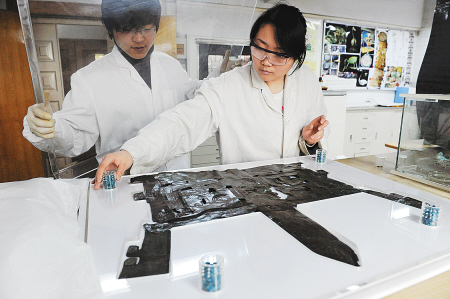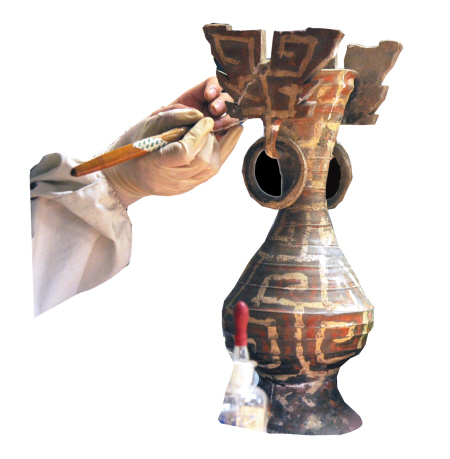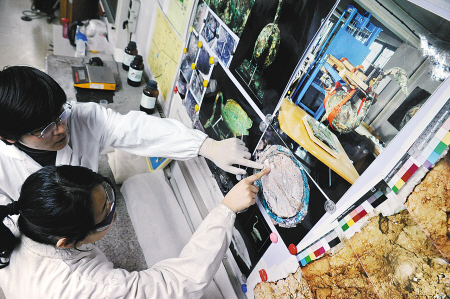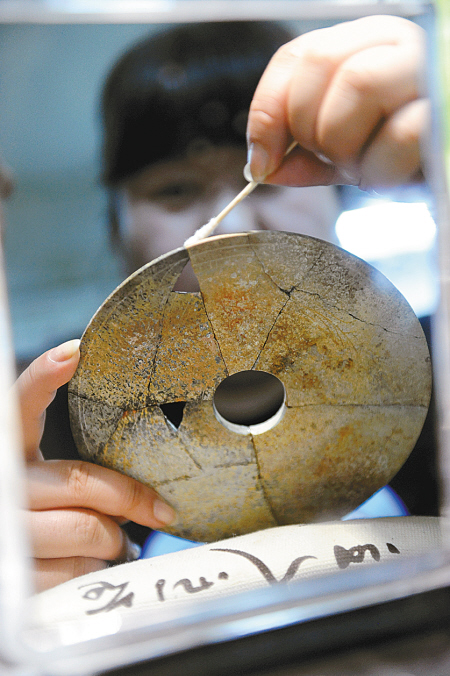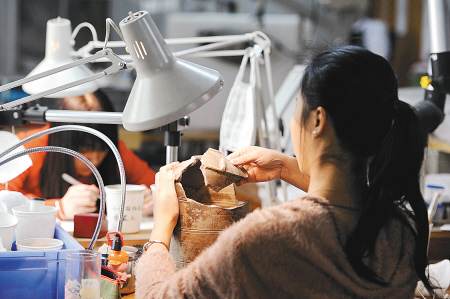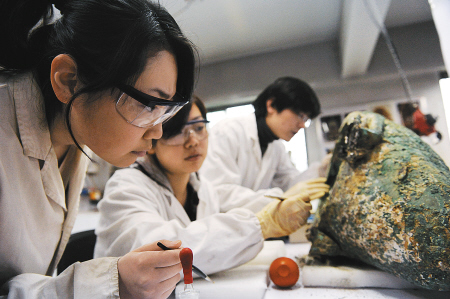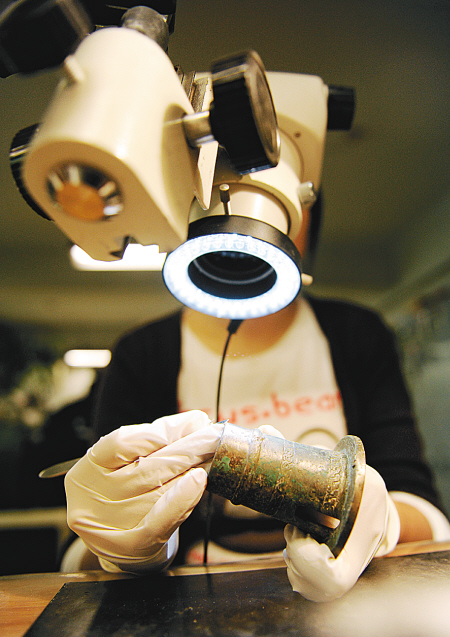Place a desiccant to seal the artifacts. Technicians fill pots with pots. The laboratory wall is full of information pictures for the reference of researchers. The Han Dynasty jade was perfectly stitched. Technicians are splicing pottery. Researchers are repairing bronzes of the Qin Dynasty. Use potion to repair frescoes. The technicians in front of the work bench are busy repairing artifacts. Bronze rust spots are removed under a microscope. When visiting the museum, you were impressed with a beautiful piece of Millennium artifacts. In fact, almost every piece of cultural relics discovered from the underground and into the museum will undergo a “repair†process before it will be presented in front of the public and convey the breath of life before the millennium. How is this mysterious “repair†program actually performed? Perhaps the answer can be found in the laboratory of the Provincial Department of Archaeological and Cultural Relics Protection Department. First into the cermet protection laboratory, it is really like entering the laboratory, where there are liquids in bottles, jars, and canisters, as well as large and small instruments. Looking a bit rough, it seems that no traces of fine artifacts have been found. Only a few young staff members focus on the "unknown objects" in front of their eyes. A young girl is using the instrument to "light up" the eyes with irregularly colored oval metal objects in front of her eyes. It was originally used to remove the hard rust on cultural relics with a little bit of ultrasonic. This inconspicuous metal object was actually a bronze swan unearthed from Qinling. “At that time, a number of bronze waterfowl with different postures were unearthed. When this swan was unearthed, the neck and body were disconnected. Now the rust-removing part is the body part.†The undamaged bronze swan has scars, rust, and large and small cracks. Well, what kind of repair is it? At the other end of the lab, the reporter saw a fast-repairing bronze swan, which was more dazzling. The thick bronze color, smooth back, and occasional subtle cracks. When the staff used a special box to fix the broken head and the body, the swan immediately sprang up. Shao Anding, an assistant researcher at the Provincial Archaeological Research Institute, disclosed the secret of the “swan†repair process. If the state is poor during extraction, seal it with a medical bandage and extract it first. After surface cleaning, remove dirt and rust. The polymer is then used to bond the cracks, and then the entire reinforcement, soaked in a specific solution depending on the situation, or brush several times to delay the rust solution. Finally, splice, support, and repair the broken parts. It takes at least one person half a year to fully repair one. In this laboratory, the longest repair cycle was a crowned pearl crown unearthed in a tomb of the Princess of Tang Dynasty. It took more than two years because of too many components. The innumerable beads and sizes that have been scattered have made a lot of time spent figuring out the relationship and sorting between them. Entering the ancient mural protection laboratory, he was attracted by a frescoed mural set up with vivid colors and vivid expressions. In the end, the mural is a layer of fragile wall covering. How to protect and repair? Wang Xiaoxiao, deputy director of the Department of Cultural Protection of the Provincial Archaeological Institute, performed the secret. It turned out that the painting on the thin wall was first peeled off and fixed to the board. This step is not easy. Specifically, the surface dirt should be removed first, the wall skin should be reinforced, and the special paint should be used to soak the surface, and then a layer of gauze should be stuck on the coated board. After drying, peel the wall. After it is peeled off, it must be glued and reinforced at the back, then affixed with gauze and then uncovered the front gauze. This will prevent the mural from breaking. After the restoration, the mural is attached to a honeycomb panel made of imported aluminum. Previously, the murals were fixed on wooden boards, but it was found that the boards were prone to moisture and insects, so they were replaced with high-tech materials. Like the mural being repaired on the table, three people need two months.
Air Conditioner
Wide application in hotel, commercial building
Air Conditioner. It refers to the process of adjusting and controlling the parameters such as temperature, humidity, cleanliness and speed of the ambient air in the building/structure by manual means.
Generally include cold source / heat source equipment, hot and cold medium distribution system, terminals other auxiliary equipment. It mainly includes pumps, fans and piping systems. The terminals are responsible for utilizing the cooling air or heating air from the main air cooled chiller or Water Cooled Chiller, specifically processing the air and temperature of target environment to meet the requirement.
The main spare parts: compressor, condenser, evaporator and expansion valve.
It includes:
1. Residential Air Conditioner. Such as wall mounted split unit, Ducted Split Unit , floor standing and cassette unit with small cooling capacity 12000BTU, 18000BTU, 24000BTU, 36000BTU, 48000BTU and 60000BTU. This type air conditioner usually used for residential use.
2. Commercial Air Conditioner. Such as Air to air Rooftop Packaged Unit, Air cooled chiller, Water cooled chiller, Industrial chiller and terminals like Air Handling Unit and Fan Coil unit. Mainly used for commercial building and some project.
Air Conditioner Air Conditioner,Air Conditioning,Central Air Conditioner,Industrial Air Conditioner Jinan Amrta Air Conditioning Co.,Ltd , https://www.amrtaac.com